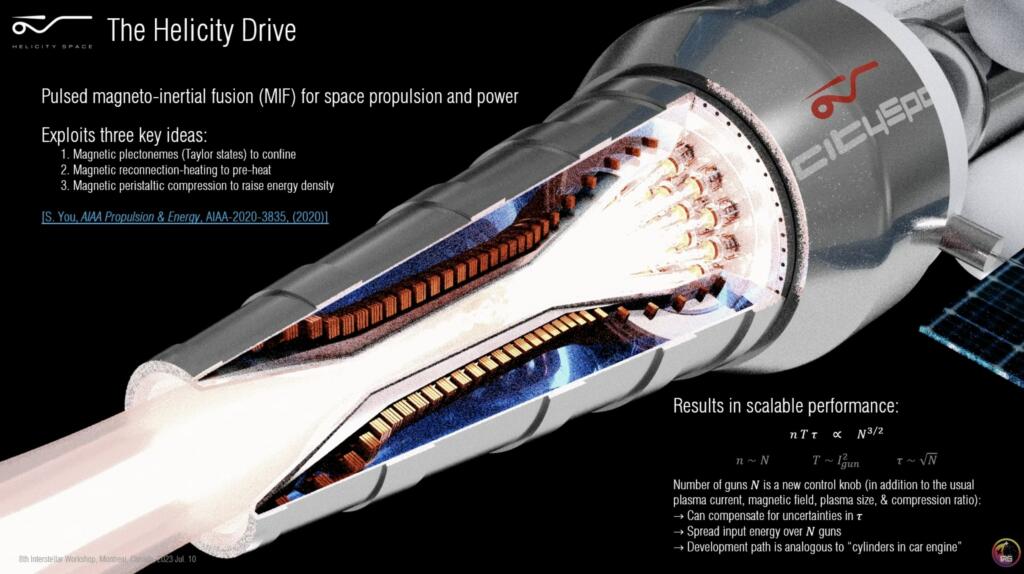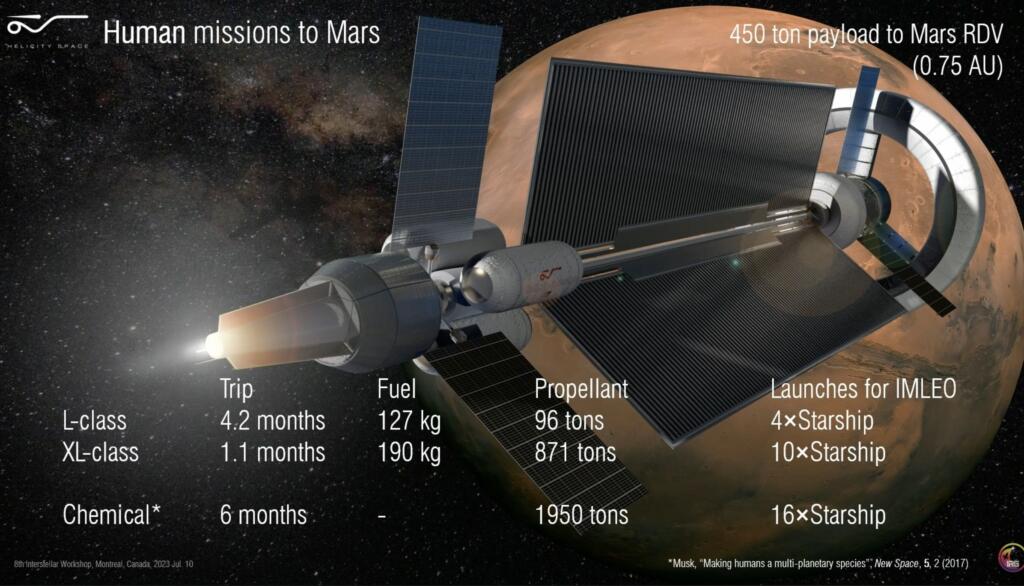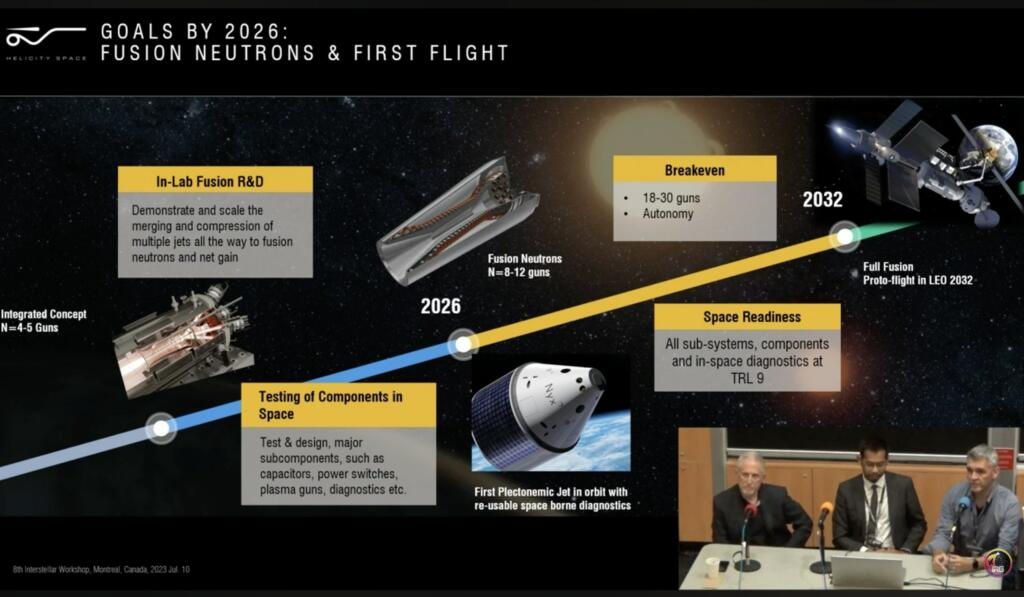Helicity Fusion is developing fusion propulsion for space ships. They have built and are testing their first fusion gun and are testing it in the lab. They plan to have four fusion guns and a compressor by the end of the year. They will NOT reach fusion conditions for a few years. They plan to fly components in space by 2026.
The goal is to have multiple guns reach fusion conditions and have a fusion enabled system flying in space by 2032. They distribute and scale with the number of fusion sources (aka fusion guns).
The systems power and performance will scale with more guns and a higher shot rate. The initial systems will have one shot every 100 seconds and then they will have higher performance with one shot every second.















Brian Wang is a Futurist Thought Leader and a popular Science blogger with 1 million readers per month. His blog Nextbigfuture.com is ranked #1 Science News Blog. It covers many disruptive technology and trends including Space, Robotics, Artificial Intelligence, Medicine, Anti-aging Biotechnology, and Nanotechnology.
Known for identifying cutting edge technologies, he is currently a Co-Founder of a startup and fundraiser for high potential early-stage companies. He is the Head of Research for Allocations for deep technology investments and an Angel Investor at Space Angels.
A frequent speaker at corporations, he has been a TEDx speaker, a Singularity University speaker and guest at numerous interviews for radio and podcasts. He is open to public speaking and advising engagements.


To produce fussion as far as I understand you need tritium only found after electrolisys to a large amount of sea water. Am I wrong? So using traditional power methods????
Tritium does not occur in nature. Heavy water Candu nuclear fission reactors make breed Tritium. Other special reactors can make Tritium. There are fusion systems that propose using Hydrogen and boron.
To inform “Mike” somewhat more completely,
… Fusion can happen from a number of different pairs of atoms. The word ‘fusion’ relates to the fact that pairs of atom nuclei are joined (fused) together. It always requires unbelievably high temperatures or other means to crash nuclei together sufficiently fast as to overcome their natural ‘positive repels positive’ charges.
… Of the different possibilities, only the smallest atoms work. And of the smallest, only those such as deuterium (hydrogen with 1 neutron), tritium (hydrogen with 2 neutrons), ³He ‘trilium’ and boron are suitable. (D + D, D + T, ³He + ³He, H + B).
… and it is deuterium which can produced by electrolysis of water. It is about 1 part per 7,000 in seawater. Tritium is almost completely absent from the biosphere where we live. It can however be mined from lunar dirt, one of the attractions of going back to The Moon in the future. As Brian said, it also is known as a nucleogenic material, produced by nuclear reactors that are ‘seeded’ with other elements that are particularly susceptible to releasing tritium during nuclear fission reactions.
There … the High School school teacher in me is more satisfied.
⋅-=≡ GoatGuy ✓ ≡=-⋅
The best fusion reaction for this scheme would be tritium + helium 3. That’s because the products of the reaction are all charged particles, or in other words no neutrons. In the real world there will always be side reactions that release neutrons, but many fewer than deuterium + tritium.
A reactor running the Hydrogen + Boron reaction would have even fewer neutrons, but would require a higher temperature-density product.
Pretty sure you meant Deuterium + He3; Not only would Tritium + He3 be a neutronic reaction, the Tritium + Tritium side chain would predominate, and it’s very neutronic.
I used to draw pictures of futuristic fusion and fission reactors when I still had the college release of AutoCAD. It was fun to daydream.